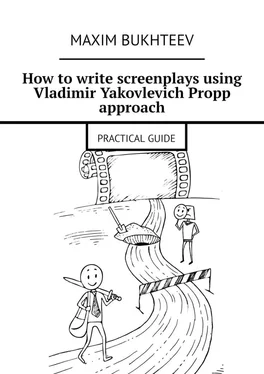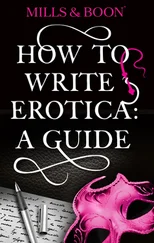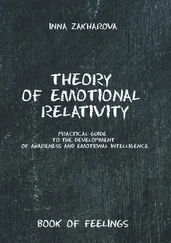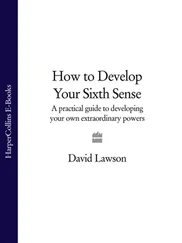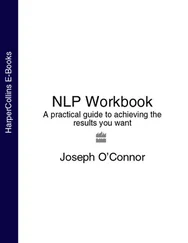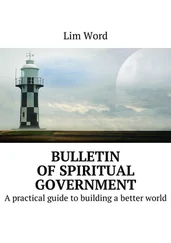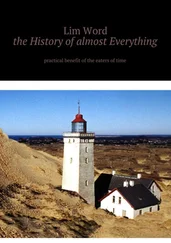Maxim Bukhteev - How to write screenplays using Vladimir Yakovlevich Propp approach. PRACTICAL GUIDE
Здесь есть возможность читать онлайн «Maxim Bukhteev - How to write screenplays using Vladimir Yakovlevich Propp approach. PRACTICAL GUIDE» — ознакомительный отрывок электронной книги совершенно бесплатно, а после прочтения отрывка купить полную версию. В некоторых случаях можно слушать аудио, скачать через торрент в формате fb2 и присутствует краткое содержание. ISBN: , Жанр: Прочая научная литература, Хобби и ремесла, Руководства, на английском языке. Описание произведения, (предисловие) а так же отзывы посетителей доступны на портале библиотеки ЛибКат.
- Название:How to write screenplays using Vladimir Yakovlevich Propp approach. PRACTICAL GUIDE
- Автор:
- Жанр:
- Год:неизвестен
- ISBN:9785449814470
- Рейтинг книги:4 / 5. Голосов: 1
-
Избранное:Добавить в избранное
- Отзывы:
-
Ваша оценка:
- 80
- 1
- 2
- 3
- 4
- 5
How to write screenplays using Vladimir Yakovlevich Propp approach. PRACTICAL GUIDE: краткое содержание, описание и аннотация
Предлагаем к чтению аннотацию, описание, краткое содержание или предисловие (зависит от того, что написал сам автор книги «How to write screenplays using Vladimir Yakovlevich Propp approach. PRACTICAL GUIDE»). Если вы не нашли необходимую информацию о книге — напишите в комментариях, мы постараемся отыскать её.
How to write screenplays using Vladimir Yakovlevich Propp approach. PRACTICAL GUIDE — читать онлайн ознакомительный отрывок
Ниже представлен текст книги, разбитый по страницам. Система сохранения места последней прочитанной страницы, позволяет с удобством читать онлайн бесплатно книгу «How to write screenplays using Vladimir Yakovlevich Propp approach. PRACTICAL GUIDE», без необходимости каждый раз заново искать на чём Вы остановились. Поставьте закладку, и сможете в любой момент перейти на страницу, на которой закончили чтение.
Интервал:
Закладка:
How to write screenplays using Vladimir Yakovlevich Propp approach
PRACTICAL GUIDE
Maxim Bukhteev
Illustrator ArtFanat
Translator Ksenia Sterlenko
© Maxim Bukhteev, 2020
© ArtFanat, illustrations, 2020
© Ksenia Sterlenko, translation, 2020
ISBN 978-5-4498-1447-0
Created with Ridero smart publishing system
Introduction
Who is Vladimir Yakovlevich Propp, quoted by many foreign screenplay manuals? Why had his work become so popular among screenwriters, that in the professional community people even started talking about overusing of this approach?
Indeed, many other scholars were engaged in folk art, and they have also noticed that many elements in fairy tales repeat themselves constantly. Attempts to somehow describe and systematize these recurrences to create a lean fairy tale structure, have been made repeatedly. However, it was only Propp who has managed to create a methodology flexible and versatile enough, which allowed it to be applied to other formats as well. By the way, this has happened already against the author’s will, as he had deliberately limited his research solemnly by fairy tales, being afraid of losing some in scientific accuracy.
So, right from the start I would like to focus your attention on the fact that the Russian philologist, folklorist, Leningrad University professor has never written anything about movies. On the one hand, this is a very bad start for the “how to write a screenplay” book. But on the other hand, Joseph Campbell, the worldwide famous American mythology explorer, has not written anything about screenplays either. However, his works are in every serious Hollywood screenwriter’s library.
How did that happen?
A motion picture is a young art comparing to painting, literature and poetry, and it didn’t have a solid theoretical basis from the beginning. While a motion picture was just an attraction, this basis wasn’t really required. The first directors were just filming crowd on a street. And it was enough for a box-office success. Everything was done by one single person and a separate screenwriter profession did not exist at all.
Sure enough, a viewer got bored of watching the screen, as through the window to the street, pretty fast, and authors started making up new tricks. They were moving a camera and went to different places with it. Then circus actors came into movies – clowns, acrobats and bearded women. Then gradually camera started filming actors and acting out simple scenes as in a theatre.
And when a motion picture became more complicated, it got clear that viewers like good stories a lot more than they like tricks and simple special effects. They started to take a backseat and that’s how a screenwriting was born.
But a weak foundation cannot hold a big and complicated construction. Writers came to the movies aid. For some time, film adaptation of books worked pretty well, but all the more movies were filmed. They were becoming more and more complex and a viewer was getting choosier. It was not easy to surprise him, and the literary material was ending.
Gradually a motion picture has become an independent art, but for quite a long time the screenwriting theory was limited with just general words. Every author could hope only for his own hunch, experience and talent. This continued until George Lucas had filmed his famous Star Wars. Film release was like an explosion. It has created a new motion picture and its own mythology. As an indirect process of this phenomenon, there was a surge of interest in common mythology. Although Lucas wrote the first movie in the old way, by touch, after its tremendous success the director has found out with surprise that he had been walking the same way as authors of ancient myths had.
There was nothing surprising about it. Firstly, viewers story perception has its laws, common to all humanity. Secondly, George Lucas himself studied these laws at Modesto Junior College, where he was taught anthropology, sociology and literature.
After success of his movies, Lucas reread “The Hero with a Thousand Faces” by Joseph Campbell, which he had studied in college, and in creating his next movies he deliberately used the mythology structure. George Lucas’s loud public announcements about kinship of fantastic plots and myths have led to popularity increase of Campbell scientific writings as well.
To facilitate a screenwriter work over a complicated book, Christopher Vogler, a Hollywood producer, writes a small manual “A Practical Guide to The Hero with a Thousand Faces”. And in 2007 he issues an expanded version of it – “The Writer’s Journey: Mythic Structure for writers”.
What does it all have to do with Vladimir Yakovlevich Propp, the Russian scientist, who wrote his most famous “The Morphology of the Fairy-tale” writing in 1934? The thing is, his researches resonate closely with what Campbell describes. Not without reason Christopher Vogler mentions Propp frequently in his writing.
After it became clear to everyone, that stories told by movies were of the same nature as all other stories in the world, there was a surge of interest in their theory. This is where Propp’s work came in handy.
Propp’s book went down in the history of European philology in 1958, when it was translated into English. The American edition has immediately received a lot of enthusiastic responses in press. Many scholars believe that the philologist’s writing was far ahead of his time. Therefore, it is no coincidence that around the same time a new science of cybernetics gained recognition, the science with which Propp methods had much in common.
And in his motherland Propp’s writing was known by specialists only. Actually, it’s no wonder, considering constant authority attacks on this whole scientific direction because of its disagreement with Marks and Lenin teaching.
As the professor Elizabeth Warner, the Head of the Russian Language Department at Durham University, writes in her book “Vladimir Propp, 1895 1970: The Study of Russian Folklore and Theory”: “… it may be suggested that ‘Morphology’ could’ve been left relatively unknown in Russia, except to the specialists circle, if foreign critics would have failed to pay attention to it ”.
Personally, I am sure that practical western writers, journalists and screenwriters have appreciated immediately the Russian scholar writing’s potential, as they understood how it could be used in their daily work, namely creation of new stories. But there was no simple and clear methodology on how to do it when creating screenplays, until now. And this is the gap I hope to fill.
Why Propp if there is the Campbell writing?
The most ancient and widespread stories are myths and fairy tales. Although they are close relatives, nevertheless these forms should not be confused.
Let’s begin with the fact that the fairy tale scheme by itself is a lot more developed and complicated, than the mythology one. A myth is an ancient conservative form, but it lies in the basis of a fairy tale, as Vladimir Yakovlevich Propp writes. A myth tells about creation of the world, in which gods and similar heroes act. This is largely a sacred text, narrating about creation of all things existing.
This is what Campbell tells us about the difference between a fairy tale and a myth in his “The Hero with a Thousand Faces” book: “ As a rule, a fairy tale hero achieves a local victory within his microcosm, whereas a myth hero achieves worldwide historical macrocosm triumph. While a fairy tale hero is the youngest or despised child, who gets extraordinary abilities and defeats his own abusers, a myth hero at the end of his adventure obtains a means of revival of all his community in whole ”.
Читать дальшеИнтервал:
Закладка:
Похожие книги на «How to write screenplays using Vladimir Yakovlevich Propp approach. PRACTICAL GUIDE»
Представляем Вашему вниманию похожие книги на «How to write screenplays using Vladimir Yakovlevich Propp approach. PRACTICAL GUIDE» списком для выбора. Мы отобрали схожую по названию и смыслу литературу в надежде предоставить читателям больше вариантов отыскать новые, интересные, ещё непрочитанные произведения.
Обсуждение, отзывы о книге «How to write screenplays using Vladimir Yakovlevich Propp approach. PRACTICAL GUIDE» и просто собственные мнения читателей. Оставьте ваши комментарии, напишите, что Вы думаете о произведении, его смысле или главных героях. Укажите что конкретно понравилось, а что нет, и почему Вы так считаете.
